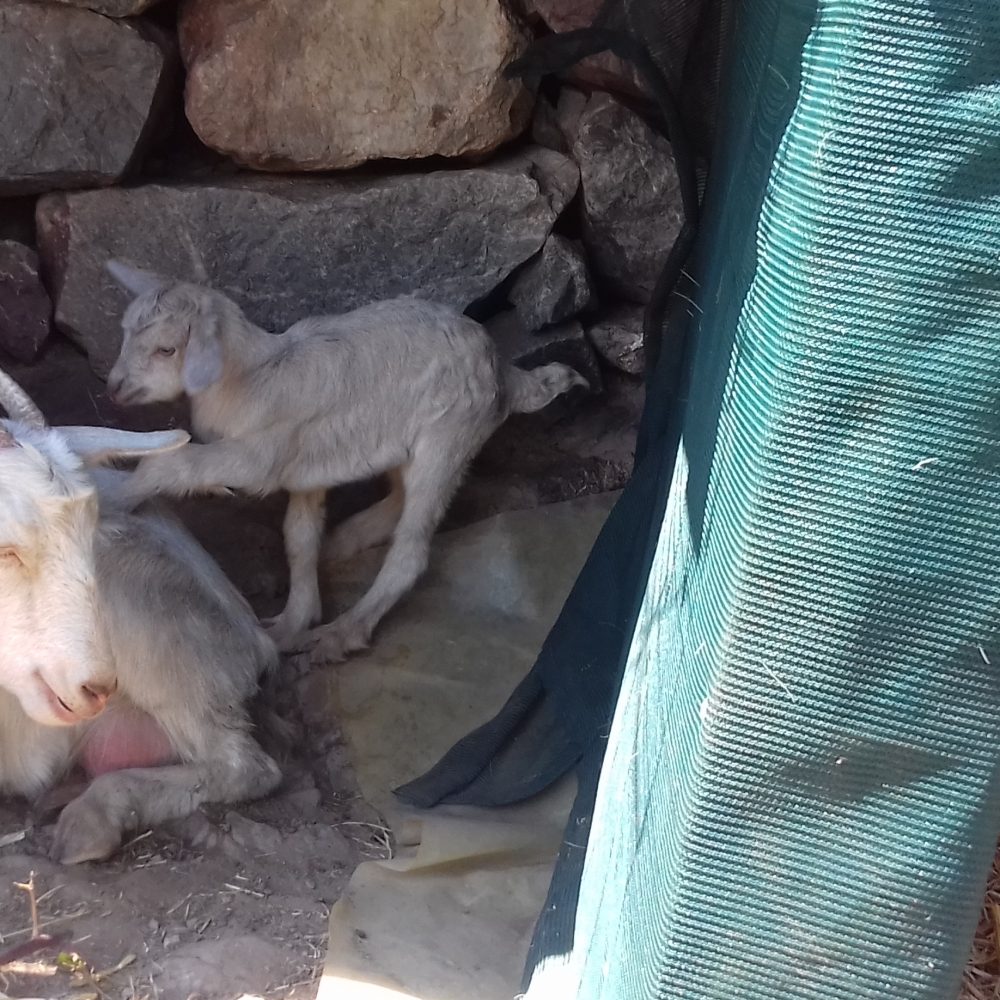
Update April 24th 2017
The miracle tree, Tree of life, many names. one plant.
Its botanic name is Moringa oleifera and plenty of information is available. We write the Moringa story. Participation from the very beginning is allways just a click away.
We live in times of climate change. The geographical position of the island of Crete, sourrounded by the Mediterranean Sea indicates a subtropical future for the foreseenable future. The prevailing Olive cultivations will suffer from increased humidity and deminished radiation throughout the year. Sometime rain will fall in the yet dry season, environmental conditions are thriving in time.
We think that this species with its multiple uses and benefits for mankind and nature can become a cornerstone of healthfood supply. Ou last cultivation was burned in the wild fire. We have seeded them and we will grow them again. In order to gain experience in small quantities. Than we will distribute them in the Cretan Econet to collect knowledge concerning the impact of the different locations. In our place local winds seem to strong for example.
May I present: Moringas the second. Another story, another show. True stories thriving in time
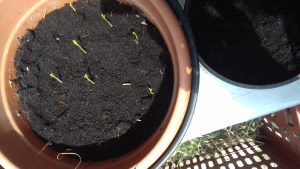
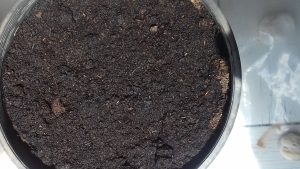
Update April 15th 2017
Compost building
The compost heap is the beating heart of the garden. They contain myriads of life forms according to the state of compost and its location. We turn our compost twice a year arround equinox.Here some pictures of the outer zone of the fresh compost heap
Here the inner zone
The ready compost 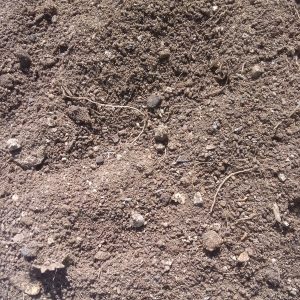
We have four different heaps. The very fresh with organic material of the day. The second heap,is already half year old and contains more processed material, the third is one year old and contains mainly small organic substrate with soil life and some not well digested woods. The last one is the ready compost. We hace each half year about 300 liters of finest compost.
The emptied heap of ready compost and the next one to be refilled
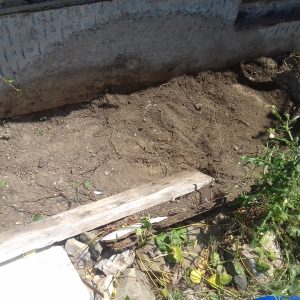
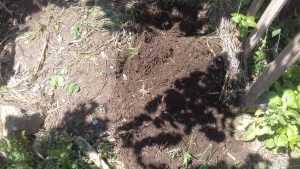
filled up with the foregone heap, watered well and covered with leaves to avoid solar radiation on the substrate,
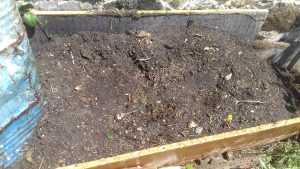
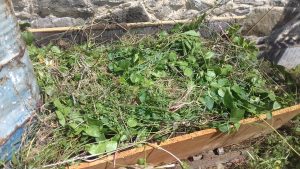
This is the heap where we took the material. It became filled up with the half digested material of the second heap, watered well and covered with plant material

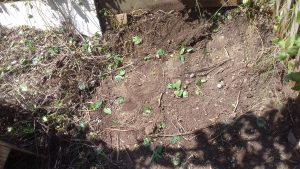
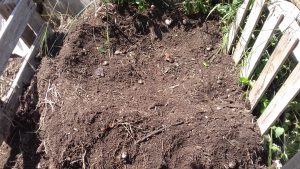
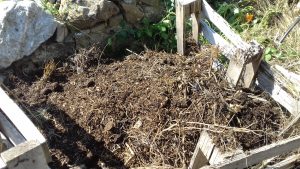
Finally the fresh compost was transfered. With each movement of the material it gets mixed. For any question please respond with your comment. Here the tools used and the ready compost place. Working time was 3 1/2 hours.
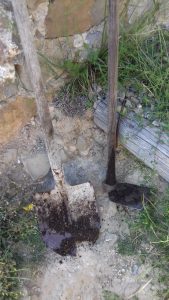
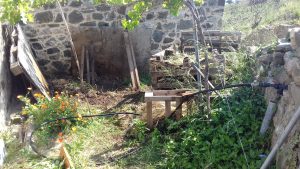
Plot 1
Update March 8th 2017
Highlight 5 days old baby goat trying to climb on mother. Margerita was born on the 2nd. Finally Gala has company. On its own. Bravo Gala
We have population pressures on our plots that require decisions.
Before the fire we used to led the wild senapis flower and seed. Now the burned down but formally cultivated plots are in full flower of senapis.
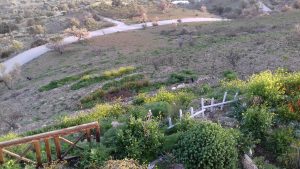
They are full of bees as it seems the only crop for miles for bees. All plants are full of ladybirds (Cocinides). Very full. What to do? Senapis should go to the goat and compost heap! Pest is unwanted!
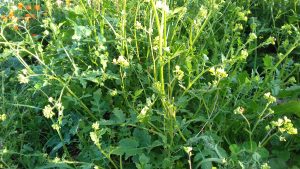
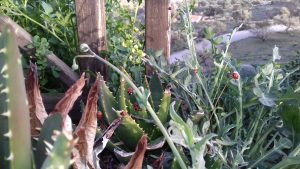
It does not matter if it is permaculture, regragrian or agroecologic agriculture or soil culture, we are challenged with the fact that nature deserves measures which do not fit our plannings. Soil culture has to be outcome oriented. It cannot be exclusivly anthropocentric. We have a responsibility: We manage islands of resilience in a desertifying environment. Wherever you know such island, please support the activists.
Interventions to protect biodiversity is intervention to save the food chain. Where ladybirds are a part of as well. They contribute to the seriously threatened bird population and lower the pest pressure for our crops. We are part of the cycle. Decisions in favour of the cycle of life are multifunctional. They will overcome monocausal paid for economic solutions. It is fair to share. Step in to dance the dance of life
Plot 1
Update Feb. 2nd 2017
Highlight Winter came to Crete. The lead pic shows the Psiloritis mountain about 15 km in our back. 6 -12 decree and very cold and wet winds slow the life processes down. The density and variety of the plot can be compared with the earlier pics. It shows groth progress in the vegs as well as in soil cover. The main wild plants, mainly mustard, radicio, and Urtica provided us in the meantime with delicious raw salats.
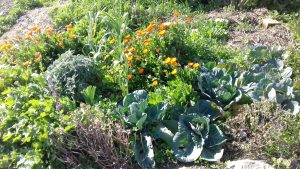
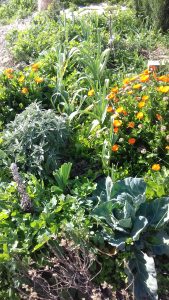

This food enables us to grow it. Raw salads from wild plants are not only superfood. We are helping them to heal the soil as well. That is why it is food for the soul.
PLOT 2
We see the conditions of our former cultivated terrasses compared to the bare surroundings. There is significantly stronger growth of wild plants on the terrasses. We choose the terrasse with the surving Aloe vera boundary planting for this plot.
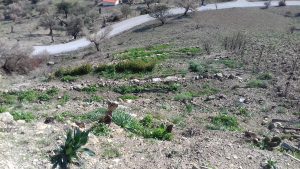
The soil was left untouched since the fire, some garlic has survived. We opened the soil with a pig teeth. A pig teeth is like a hawk and opens the soil. It does not mix the different soil layers but air and water can penetrate better. The soil was well wet. We covered it with 4kg/m2 compost/ rape animal manure and seeded rows of spinach and raddish. Lentls we seeded all over the plot. We covered the plot with prerotten shreddered Eucalyptus and Ickory scrap. Than we put 5 cm layer of shreddered Olive wood on it
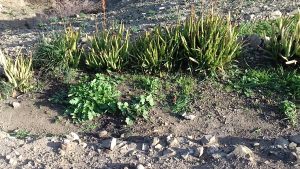
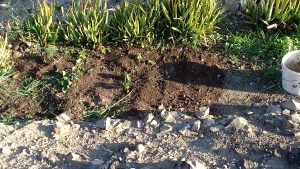
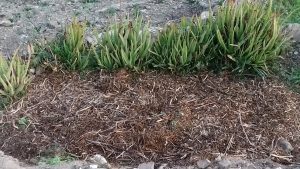
It is not the size that matters. It is the outcome overtime. This plot went public.
UpdateDec, 15th 16
Highlight: Gala, milk goat, intended supplier of milk, yoghourt and cheese.
The cabbage and leak in the earlier introduced Plot 1 was planted on soil in a good state of organic matter. It was fertilized with about 2 kg of animal manure and compost per m2. We started with a 10 cm straw layer to covr the soil. On the plot grew Caledula off for Nemathod prophylaxis and soil health. Its young leafes and later the petals of the flowers are delicious in salat and since centuries part of the Mediterranean Diet. Arround the plot are diverse aromatic plants. You see the tremendous growth of the wild plants We leave them for continous root growth. The upper part is used for our or animal food. An occasion to present:
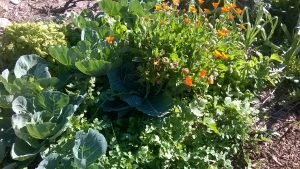
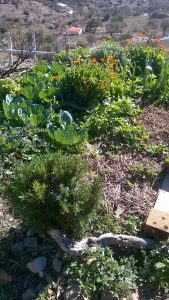
The soil in the right part of the plot was prepared later with the same manure and a 5 cm layer of shreddered Eucalyptus leaves and wood. The material was fermented in advance to avoid the negativ impacts on germination of its etheric oils. Onions were planted Dec 6th.
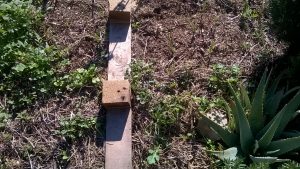
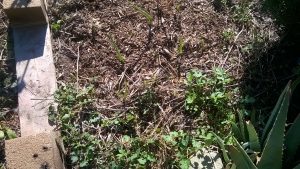
This optical impressions show the state of the physical environment in the surroundings of the centre. This pictures will be regularly updated to show the changes over time.
Public agricultural water supplies the basic resource. Water. We hope that supply is stable in the next future. Development without added water can be followed under BIOCrete wild life centre
As of today: Hundreds of meters of the supply pipes were replaced. This is a part of what has left from our irrigation system and the plant nursery. Burned plastic will end up in a public landfill.
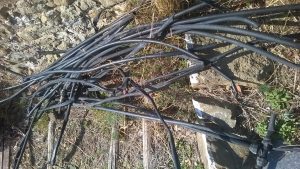
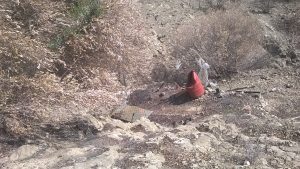
Yet we could replace the supply system, for irrigation purposes we have to proceed step by step, terrace by terrace.
Irrigated and not irrigated land make a large difference. 4 month following the fire, views before the fire and today.
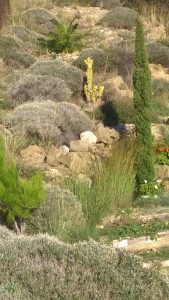
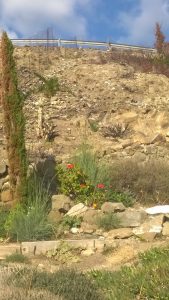
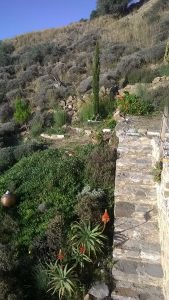
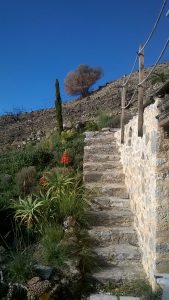
This plots were not burned and show plant cover with products. The pics are the start for the plot development blog, where crop rotation and plant cover techniques will be shown. We follow the soil development from its surface.
This is is plot 1 with unburned soil 4 month later Outside the plots is burned land
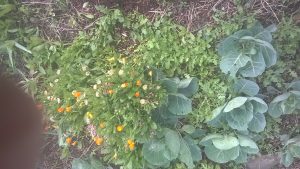
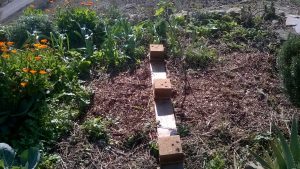
This is Plot 2 with burned soils with a Aloe vera boundary, which survided the fire.Some remaining garlic
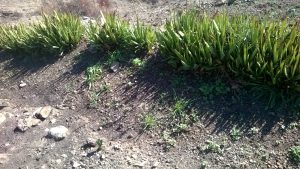
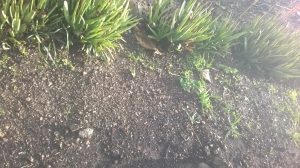
Leave a Reply